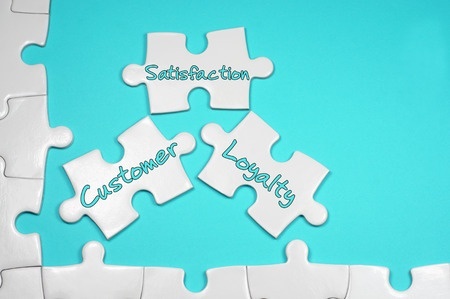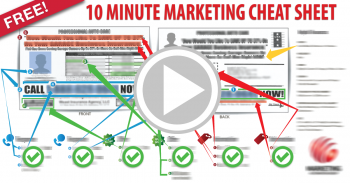- You are here:
- Home »
- Blog
Technology and the Traditional Business Model—Does it Work?
Do you have a great idea? Do you think it will sell? How do you produce, market and manage your product or service? And how can technology help you? These are all basic questions that challenge every small business owner.
I got my start in small business with an auto repair shop. Plus, I have always been a computer geek. Along the way, I put the two together, and with a lot of hard work, I built businesses with revenue in the millions—by combining traditional business concepts and technology.
Small business owners and tech
A lot of small business owners are dedicated to delivering old-fashioned value and service to their customers. I work with a diverse group of clients who come to me when they have tried everything to get ahead, and are either falling behind, or just not achieving the success they want. I know—I’ve been there.
For me, a turning point arrived when I began to deeply understand the customer lifecycle, not just the single sale. By adding technological solutions to my traditional understanding of business concepts, I achieved success. And now I work hard to offer that opportunity for financial success to each small business owner I work with.
Technology, when used correctly, can help you allocate your time better, offer greater value, save money—and make you money. I use appropriate tech to create personalized, high-touch marketing campaigns and back-office tools that build my brand and extend my reach.
Trends in marketing tech
For me, a high quality customer relationship is a key differentiator. I want my clients to know they matter, and that I value their business. A lot of the time, my go-to method for personalized, old-fashioned client care is technology.
In 2014, Salesforce, a cloud computing company, sponsored a Forrester report on one-to-one, or personalized marketing. The survey queried more than 150 marketing decision makers in a variety of businesses, including leisure, retail, healthcare, financial services, and others. Trends identified in the report include the following:
- Consumers are more savvy than ever about services and information available to them through information technology. Personalization technology has not evolved as quickly as customer ability to use, and manipulate, their buying experience.
- The capability to create an individualized view of customers impacts the ability to orchestrate a helpful or successful customer journey. This means maintaining continuity during the customer experience and creating multiple real-time touch points during which to make attractive offers.
- Many companies are more focused on customer, or client, acquisition than they are on personalization. This more traditional thinking comes at the cost of the increased sales and conversions that can result from improved personalization techniques.
- Big data overwhelms marketing decision makers, making it difficult to create effective, automated, personalized marketing campaigns.
- Effective sales teams are more than three times more likely to use sales analytics than lower achieving sales units. Top teams are heavy adopters of high tech.
- High achieving companies are 3.5 times more likely than lower performing companies to view sales as the responsibility of the entire organization.
Together, old fashioned customer service, and meaningfully deployed marketing automation are critical to the future success of small business entrepreneurs.
Trends in IT for entrepreneurs
In the back-office, there are IT trends that business owners cannot ignore. Consider these points about small businesses and technology from the Harvard Business Review:
- Use appropriate spreadsheet, and financial, technology. Free resources on the internet may not provide the specialized solutions you need to track and drill into your business metrics. Conversely, enterprise architecture is not usually needed by small business owners.
- Appropriately sourced cloud-based storage and SaaS can save entrepreneurs on multiple fronts.
- One quoted expert notes, “SEO-optimized web sites, blogs, and social media are often the center of small business marketing programs. Combining them with a database or sales automation system to build brand and awareness makes small businesses much more open to the world.”
The model of traditional business has changed, but not traditional values. Do you have an unbeatable offer? Do you have the right technology and workforce in place? How about your business plan? When you know you can succeed, but you do not know what to try next—call me, I can help. My business goal is to make you a millionaire. You can reach me at 585-633-7563.
Yours in profit.
Bob Britton
Reputation Management—Do You Need it?
 The mobile and contagious nature of negative customer comments makes reputation management a must for any small business owner.
The mobile and contagious nature of negative customer comments makes reputation management a must for any small business owner.
Along with the opportunity to create and expand your brand, the Internet also offers dissatisfied customers plenty of opportunity if they decide to take their beef online. Search engine reputation management (SERM) and online reputation management (ORM) are two names for the same type of important service—consultants and businesses that keep tabs on your online reputation.
What is it all about?
The importance of reputation management for entrepreneurs
In a recent blog, I talked about the importance of going the extra mile with customer service—especially if your client is unhappy. A negative Internet comment or review can catch fire under the wrong circumstances.
While large companies take Internet hits with some frequency, a smaller, local business can really struggle in the face of negative online backlash.
Good Internet reviews, comments, and information are influential to customers, potential employees, business partners—even lending institutions. While some people believe that any publicity is good publicity, a negative reputation is hard to overcome on the Internet.
The annual 2014 BrightLocal survey of approximately 5,000 consumers made some interesting points about customer use of Internet reviews, including:
- About 57 percent of respondents searched online for local business services more than six times per year. According to Google, more searches now take place on mobile, rather than desktop computers—meaning your clients are on the move, and looking for a business that serves their needs.
- When looking for the right place to take their business, 88 percent said they read online reviews of local companies.
- Online reviews frequently use a star rating system, for example, one to four stars. While 72 percent may use a company with a three-star rating, only 27 will continue to investigate a company rated with only two stars.
- Many consumers do not begin reading reviews until they have found businesses that meet their needs, and they are trying to decide between competitors. Approximately 72 percent of respondents said online reviews help them evaluate a company enough to tip their decision toward—or against—a purchase.
- About 88 percent of consumers trust online review and comments as well as they do a personnel recommendation from someone they know.
These statistics leave no question that positive online buzz is helpful—and that negative comments can damage sales, and your brand.
Damage control—what can you do?
The best way to deal with a negative online comment is not get a bad review in the first place. Train staff, provide exemplary customer service, and be ready to offer coupons, perks, and waive costs if a mistake happens. Preventing bad Internet press is far easier—and less expensive—than controlling the damage caused by an unhappy customer.
But let’s say a customer is unhappy with a product, and does not get the satisfaction they want when they reach out to your company. They post a negative review on a social media channel. What do you do?
- Be prepared: Be sure you are signed up for Google alerts and watch your social media to ensure you become aware of damaging comments when they are posted. Use tools like socialmention and IceRocket to monitor mention of you, or your brand, on the web or social media. In this case, what you do not know they are saying—will hurt you.
- Think first: Before you respond to the customer, take a moment to reflect on the criticism without emotion. If a client has a legitimate complaint, it is valuable feedback about what you, or your staff, could improve. While it is nice to have feedback about what you are doing right—finding out what you are doing wrong can save you customers. A poor review is motivation to do the right thing for your customer—and address the bigger issue within your operations.
- Act fast: Be proactive when you are alerted to a negative comment, or an unhappy customer. Do not wait a long time to respond, and do so directly with courtesy and generosity. Acknowledge the problem and tell the disgruntled client you are checking into it. If you need to explore facts, do so right away. If you can—come back with an offer that is responsive and meaningful.
Sometimes a fast response to a complaint earns you good will on the web. At other times, a complaint may not have any weight. Your best option is to make it right. The decision, and the investment needed to respond to the issue, is yours.
Reputation management—do you need it? You bet. If you have questions about online branding, your marketing reach, or problem solving customer complaints—call me at 585-633-7563.
Yours in profit.
Bob Britton
Customer Service: The Extra Mile Counts
For a lot of reasons, going the extra mile for your customers is a good idea.
Many small business owners spend good time and money parsing analytics and pursing strategic marketing angles. All good ideas. But once your customer walks in the door, that point of contact makes all the difference.
The good, the bad, and the ugly
When I work with small business owners, we build a strong business plan, and plot smart marketing moves to deliver an unbeatable offer. Despite the best laid plans, though, when it comes to closing the deal, the point of sale can sometimes go very wrong.
I talked in an earlier blog about an experience I had with a marketing vendor. I had to delay initiating a campaign, but got back to them a week or so down the line to restart my account. Nothing could convince their service rep to open my account and move forward. When I delayed, they cancelled. Needless to say, my business—and good opinion—went elsewhere.
I am sure you, and people you know, have a hundred unbelievable stories about poor customer service. Like they say, a happy customer tells one person, an unhappy customer…posts it on the Internet and tells everyone.
So we all know what poor customer service is, and the real and intangible damage it does to your business and reputation. Now let’s talk about the extra mile.
Customer service—your chance to add real value
Small business owners who attend our live events hear me talk about value all the time. When you provide premium service, you can charge premium prices. When you are charging more for your services—and providing higher value—you get the loyal clients you want and the higher income you need.
So let’s talk about that extra mile and how you get there.
Everyone knows what the extra mile feels like. It is when a business, or a teacher—or someone on the street—takes a minute to make your life a little easier. Anonymous good will is a great thing. In a business setting, good will not only builds your brand and reputation, it makes you money.
Here are my top tips for providing more value through the extra mile:
- Friendliness counts: On your sales floor, on the phone, at the counter—friendliness matters. A smile and patience mean everything—and a satisfied customer is a repeat customer.
- Make sure your product meets the needs of your client: Sometimes just listening to your customer is what it takes to earn their good opinion. Instead of rushing to your options, listen to their problems. Understanding the needs and wants of a customer helps you form the offer you need to make. Some clients want a price cut, some need extra service, or timing is an issue. Going the extra mile to listen gives you a chance to make the unbeatable offer.
- Customer tracking: Personal service and marketing automation make it easy to know your customer. It is rare when a customer is not impressed that you remembered their name, or a previous purchase. Tracking personal metrics and using the right technology gives you the opportunity to personalize your service beyond the sale of one product. Remember their business, their birthday, the project they talked about. Send a note, or an automatic gift, and create an easy, trusted business acquaintance who will remember you when they need your services again.
- Employee attitude and training: As your front line, employees and your sales force are the face of your business. Be sure your staff is well-trained and engaged in the goals of your business. Consistency is a big reason customers return time and again.
- Problems: A mistake or a problem can be a cloud with a silver lining. It is easy to be friendly and smile when everything is going right—it takes more skill when a mistake is made. When the going gets tough—make sure your staff goes beyond the call of duty to make it right. If the problem is handled well, the chances are good your customer will tell others about the great service.
- The extraordinary ordinary: Most of the time life is not dramatic, and each day passes. When a client comes into your shop, or your office, make an ordinary business transaction extraordinary by remembering names, offering value—or offering to solve their problem in a way that will not bring you profit, at least not right now. Listen and find a way to meet those needs, and stretch your service to be what they need right now. Few customers fail to recognize what is, truly, the extra mile.
Everyone likes to read stories about businesses that do right by their customers. It starts at the top. As a small business owner, add value and build success by going the extra mile for your clients.
When you have questions about personalized client development and marketing automation, call me at 585-633-7563.
To your success.
Bob Britton
Can Influencer Marketing Help Your Business?
 Do you need to get your message out there but lack the budget for a full-blown marketing campaign? Influencer marketing can help you stretch your budget, spread the word about your brand—and increase your success.
Do you need to get your message out there but lack the budget for a full-blown marketing campaign? Influencer marketing can help you stretch your budget, spread the word about your brand—and increase your success.
Influencer marketing uses a source, or information, to target potential customers already interested in a product or service. Although very similar to word of mouth marketing, influencer marketing is not the same. Both word of mouth and influencer marketing are peer-to-peer marketing methods, but influencer marketing relies on some form of knowledgeable authority—someone, or something, already viewed by potential leads as trustworthy.
What, or who, are influencers?
As the name implies, influencers are people, institutions, and resource bases with a lot of credibility. What they say, do—and even eat—may influence the people who follow their moves on social media.
The rise of social media created opportunity for well-networked individuals and companies to build followers—people who are interested in what influencers have to say. Influencer marketing, when it works, gives you access to followers who can get to know your brand, service, or other product through the eyes of their influencer. For small business owners, followers of influencers could become leads.
Celebrity endorsements were the original influencer marketing. Celebrities were paid to pitch a product on television and became associated with the brand. Brands built buzz through placing a famous face next to their rental car, coffee maker, financial service, or jeans. Paid to speak the message of their sponsor, celebrity endorsements are still used today.
Forms of influencer marketing include:
- Individuals: Whether Girl with Curves, Tanesha Awasthi or Bill Gates, certain segments of the population want to know what’s up with the people they admire, or believe are of a common mind. Whether interested in their opinion on current events, fashion, or food, individual influencers are generally articulate, well-networked, and dialed into the culture. Generally enjoying an easy relationship with their followers, individual influencers can have a big impact.
- Institutions: When looking for education and information, many browsers point to reputable public institutions. For healthcare, the Mayo Clinic, and the U.S. National Institutes of Health, are go-to sources for many people. Understanding how pivotal institutions in your area of business serve your client base may help you serve your clients by association through content you generate.
- Knowledge base: One of the easiest means for small business owners to use influence marketing is to create a knowledge base and reputation as an influencer. Potential customers seeking information on a product or service find your site faster when your educational content is rated highly by search engines. Offering education, or guest blogging, gives you the chance to build authority—and influence. Education can take the form of blogs, white papers, well-placed articles, and nurtured social media channels.
In one influence marketing campaign, you can utilize all three of these resources. You can cultivate a relationship with an influencer, build your own influence base—and link to influential institutions that maintain a body of authoritative knowledge.
Points to understand about influencer marketing
Influencer marketing is different, and trickier from the standpoint of message. You are not paying money for a static advertisement that you hope reaches your target audience. With some work, you are connecting with a person who has a previously established, trusted, relationship with thousands of potential leads.
As any small business owner knows, referrals from satisfied customers are the most effective, least expensive means of growing your client base. Consider these tips about influencer marketing:
- Goals: As with any marketing campaign, know your goals. I have talked before about shiny object syndrome. While influencer marketing may be new to you, be sure you understand what it can—and cannot—do for you. Influencer marketing can do a lot of things—create buzz for your brand, drive traffic to your website, call attention to a promotion, generate awareness of your brand differentiators and more. Plan your objectives within the frame of our overall marketing strategy.
- What kind of influence works for your goals? Are you looking for a popular celebrity to plug your product on Twitter? Within the context of your goals, think about who you want to influence. This might be a general audience to gain brand awareness, or a niche population who is deeply invested in the types of product s you produce. Do you want to cultivate a conversation about your product, make a big launch—or cultivate everyday users who function as brand ambassadors?
- Building relationships and content: Now that you have your goals, and know what you want to say—how are you going to build a relationship with an influencer, and what content are you going to use? Working with an influencer takes time—and real reciprocity. Personal outreach works best, and takes time. It may be worth your own time to outsource your campaign through a consultant. An influencer is not a paid spokesperson—a mistake made in cultivating a promotional response from an influencer could backfire if the communication is not shaped with care.
These are some key ideas around using influencer marketing to build your brand—and your business profit. When you have questions about influencers, or your marketing message, call me at 585-633-7563.
To your success.
Bob Britton
Don’t “Should” on Yourself—Delegate!
 You are at your desk and it is stacked with things you should do. They’re weighing you down—
You are at your desk and it is stacked with things you should do. They’re weighing you down—
and crushing your productivity. What can you do?
Don’t should on yourself. When faced with tasks you do not have the time, or skill set, to pursue, give yourself a pass. Here’s why.
As an entrepreneur, you are the captain of your ship. At the helm, you have overall responsibility for the business and your strategic plan. This means you are not at the oars, the galley, or rigging. When you lose your focus, your business goes off course—or possibly sinks like a stone.
If you cannot do everything, who can?
Delegation and the small business owner
Trying to handle business goals outside your expertise and interest is exhausting and time consuming. As we discussed earlier, entrepreneurs must undertake the responsibilities only they can handle—without feeling guilty about not doing everything else.
If it worries you to hand off some of your business function to others, consider the real benefits of diversifying your workload:
- No need to be a jack of all trades: Part of your role as an entrepreneur is doing what you do best. You have ultimate responsibility for the quality and positioning of your brand, products and services. I have said it before, and I will say it again—do only what only you can do.
- More heads are better than one: When you delegate, you work with people with the skills, or the time, to handle tasks you cannot, or should not, be doing. Working with specialists, consultants, advisors, or your own team opens problem-solving to others with experience and creativity.
- Better base: Work with a team to stabilize your business and take advantage of individual strengths. As you grow your company, offload the pile of shoulds on your desk to people qualified and ready to handle them. Individual and business productivity increases as you—and members of your team—each manage core tasks.
- Scalability: Market readiness means your business can respond when opportunity presents itself. Identifying if—and how—your business can respond to a profitable idea means exploring scalability. Developing capable, reliable external resources allows you to delegate needed services to take advantage of market circumstances.
What types of tasks can you delegate?
Consider these tips when you think about what you could delegate:
- Business direction: Strategic planning, focus, and business direction are important responsibilities for small business owners. You can use consultants, mentors, and business groups to inform and shape your perspective. Critical business thinking is your job.
- What is your passion? In theory, you started your business to do what you love, and make a living at it. Identify what tasks are part of your skill set and that you want to perform.
- Essential services: Bookkeeping and payroll are among services that can be cost-effectively outsourced. Websites, blogs, and online marketing can be managed by social media specialists. Use marketing automation to build leads, increase customer loyalty, and save yourself time.
Delegation looks different for each company. I work with entrepreneurs to create business plans and technological solutions. To coach small business owners from making in the low six, up to seven figures, I provide focus and create solutions that save them time and money.
Some modes of delegation for a small business owner can include:
- Advisor or mentor: Work with an outside expert, mentor, or coach to create strategy, and manage market and business bumps.
- Consultant or contractor: Use a consultant or contractor for project management and coordination, to handle marketing, or to perform other tasks. Consultants offer high quality, scalable service.
- Hire: Use temporary or permanent hires to fulfill identified needs.
Think about delegating tasks and services before you become overwhelmed, and your services suffer. Keep the following pitfalls in mind:
- Putting it off: When you know you are overcommitted, get help and think about delegation. Do not procrastinate.
- Avoid wrong choices: A trusted business group, mentor, or associate is a valuable source of business referrals. Due diligence is a must when you are looking for contractors to help with your business.
- Stay away from micro-management: Whether you delegate to a trusted employee, or a reliable contractor, try not to micro-manage.
When you have a lot of things to do—and you know you are not going to do them—stop shoulding on yourself. Spend time thinking about your business, and move forward.
When you want to make more money doing the things you love to do, and you need focus—call me at 585-633-7563.
To your success.
Bob Britton
VUCA? What Does it Mean to Small Business Owners?
 Between market and cultural volatility, ambiguity about the future, and complexity that underpins any decision—entrepreneurs do not have it easy. They call it VUCA.
Between market and cultural volatility, ambiguity about the future, and complexity that underpins any decision—entrepreneurs do not have it easy. They call it VUCA.
What is VUCA?
A term borrowed from military leadership in the 1990’s, VUCA is an acronym for volatility, uncertainty, complexity, and ambiguity. In other words, VUCA is the normal operating environment of a small business owner. Sure, it is crazy world. But it’s more productive to examine the parts rather than become overwhelmed by the whole.
At a glance, the components of VUCA seem to lead to the same conclusion—there is too much to handle, so just do what you can. Much of the time, entrepreneurs are too deeply engaged in helping their business survive the economic roller coaster to apply critical thinking to the mechanism of the ride. Let’s take a look at the pieces:
- Volatility: We live in a culture of change. Those who embrace volatility have a better chance of using its characteristics to build stability. Volatility is identified by its speed, magnitude, flux, surprise, and energetic nature. Information about dynamic factors is usually available, making volatility somewhat…predictable.
- Uncertainty: Frequently confused with ambiguity, uncertainty occurs when information is not available about events, trends, circumstances, or issues. Ambiguity defines a situation, while uncertainty reflects a lack of information about it. Predictable outcomes are difficult when information is uncertain.
- Complexity: All human endeavors are complex. It is only recently that complexity became a business term to describe multiple variables that interrelate to create, or influence, a situation or business state.
- Ambiguity: They say, “the measure of the greatness of a person is their ability to handle ambiguity.” Ambiguity is another common feature of human life, now added to business jargon to describe an incoming atmosphere, or idea, before it makes landfall in structure and definition. It is a thought, situation, or trend, which can go either way, and about which you have almost no information.
The excitement of a VUCA world
When I work with entrepreneurs one-on-one, or in my master group, elements of VUCA are never far from the table. A situation is uncertain, supply or labor is volatile—these are everyday components we deal with on the way to success.
VUCA can be explored from an analytic and a hands-on approach. While many focus on how to survive in a VUCA world, I want to talk about how you can thrive in an uncertain world.
Change is certain—especially in the current business climate. We can accelerate and revitalize our business processes to embrace and use change, rather than defend stale business plans against it. Consider these tips:
- Meet volatility with critical thinking: Resource management and thoughtful leadership are essential during cycles of business volatility. Identify issues—internal and external—that impact your business during volatile market cycles. Create and implement planning processes to protect against financial exposure during an unexpected bump. During periods of volatility, clear communication and intent is essential. Use volatility to better your readiness planning.
- Uncertainty is an opportunity to learn: Information gathering—and sharing—is an important tool for dealing with uncertainty. Uncertainty challenges you to better understand your business, and the business climate. Work with a mentor, or group of entrepreneurs, to gain understanding of uncertain trends, key performance indicators, or market slides. Use networking, and information gathering, to reduce uncertainty, build relationships with experts, and better align your business to take advantage of unexpected opportunities.
- Use complexity to get ahead: Gain a strong understanding of the variables that impact the growth and management of your business. If necessary, work with consultants to understand the interrelatedness of these variables and how you can use factors such as marketing, customer care and analytics to support complexity. A better understanding of complexity may help you to plan new products and services—and reach a ready market faster.
- Use leadership to manage ambiguity: By definition, ambiguous circumstances offer little guidance. Instead, you must develop leadership to creatively deal and experiment with situations that have vague cause and effect. Ambiguous environments become clear over time. Confident leadership recognizes and works to define opportunity that may—or may not—exist within ambiguous settings.
Many small business owners already have the innate ability to recognize and meet volatile, uncertain times. Successful business in a culture of change means developing readiness, and confident leadership, in the face of continually changing circumstance.
When you need a fresh perspective on turbulent factors impacting your business, call me at 585-633-7563.
To your success.
Bob Britton
The Hardest Work You Will Ever Do
 Quick question—as an entrepreneur, what is the hardest work you do? Let me give you a quick answer. As a small business owner aiming for success, the hardest work you will ever do is thinking about your business.
Quick question—as an entrepreneur, what is the hardest work you do? Let me give you a quick answer. As a small business owner aiming for success, the hardest work you will ever do is thinking about your business.
Let’s think about it right now.
What does thinking have to do with being successful?
Entrepreneurs are people who do. People who take action, and harness resources, with confidence that others may not possess. This comfort with ambiguity and need for speed comes through in the adage sometimes used to describe business: “ready, fire, aim!”
In an earlier blog, I talked about the importance of using time to do the things only you can do. When you take the time to do things that should be handled by others—or not handled at all—you make more work for yourself, and run out of time at the end of the day.
Most small business owners do not have an issue with hard work—it comes with the job description. I work with business owners to align their products, pitch, and processes with success. I know from experience that thinking deeply about the business is one of the hardest things for an entrepreneur to do. Why?
Entrepreneurs are always ready to work, to find opportunity, build outside the box, look at mistakes, and try something different next time. Many have no business plan before they are off and running. Here are areas of thought where small business developers excel:
- What is possible? Quick to recognize unprofitable ventures, experienced small business owners have a good sense of what could work. This grounding in realism sets them apart from those with great ideas who will not find their niche.
- Risk taking: By nature, small business owners are willing to embrace risk in order to live the way they want, doing what they do best. This willingness opens doors to products and careers for others.
- Internal vision, external savvy: Entrepreneurs often have a vision, or gut sense, about what they want to create, and how that might work in the current marketplace. While failure weeds out a percentage, many people with a vision move steadily toward that vision over a lifetime, regardless of challenges along the way.
The tenacity, and ability, to move an idea to market is valuable. It also comes easy to many who find their careers in small business ownership. But forward movement in the face of uncertainty only goes so far. What is needed next? Strategic thinking.
Your hardest work might be sitting still
There are a lot of reasons you can find to avoid sitting down to drill into a strategic plan for your business. Practically anything will work to distract you from a hard look at your bottom line. It is not for the faint hearted.
When I meet with a client, I have a pretty good idea of their business inside of 30 minutes. My work is to help them develop a plan—the core strategy for their product, offer, marketing technology, and workforce, among other factors.
I run live events where our master group of small business owners meets in great locations for three days to talk business. Typically our venue is a super house with great food, scenery, things to do—and plenty of time to talk business. Because I keep my live events small, about 10 people, we are able to really get into, and break down, problems that group members face.
While we discuss business and marketing throughout each day, the toughest part of any live event is when we sit down to brainstorm through strategy questions of those present. We take the busy-ness out of thinking about business. Really sitting down to figure out the right moves, reach an audience, identify potential pitfalls—I watch these highly creative people wilt in front of my eyes.
Because entrepreneurs are so good at concept work, frankly addressing, and readdressing, the flat-out business challenges facing each other is intense. More than once, I have had a business owner come up to me afterward, with a great plan in hand, and tell me they never could have made themselves sit down and do this work on their own.
More heads are better than one
I work with entrepreneurs one-on-one, and in groups. There are advantages to both.
Individually I offer small business owners personal attention and clear feedback on their present business state, and future potential. Working with clients, I develop a step-by-step plan by engaging you in deep thinking about how you are working, and what profit you hope to see. You walk away with a plan that relieves your worry, is based on sound business principles, and gives you rock solid direction on where you are heading, and why.
In a group, you safely discuss what works—and what does not work—with people who know exactly what you face. Too often business owners only have a friend, or maybe an associate, to run ideas with. Whether you join a group like mine, or form your own—get the business support you need to exploit your natural creativity. Don’t go it alone.
The hardest work you will ever do is the most rewarding—and what it really takes to be a successful entrepreneur.
When you need a sounding board, or help with your strategic plan—call me at 585-633-7563
To your success.
Bob Britton
Here is Why You Will Never Have Enough Time
What is on your list? And what have you crossed off lately? Oh—you gave up on the list. You are just living in the trenches of too little time, and too much to do. Let me tell you a secret—you will never have enough time.
Not, at least, until you get smart about how to use it.
A lot of attention, business practice, logistics, and personal frustration are rolled up in the concept of time. Young, middle-age, senior, workday, weekend—all words that measure time, underpinned by the general understanding that time flies—fast. You either work with time or it works against you.
Time and the small business owner
Until you get smart about time, you will never have enough of it. Why do I keep talking about getting smart about time? Because as valuable as time is, most entrepreneurs do not see where, how, or why, they are exhausted and falling further behind each day. That is where getting smart comes in. Let’s talk about time.
You cannot make time, but you can spend it, and waste it. My business is to help entrepreneurs become successful. In fact, I aim to make my clients millionaires, work at what they love, and enjoy their lives, too. And trust me, you do not get there without understanding time.
When I work with clients, I check out how they do business, their processes, marketing, automation, products, services, and sales. When I first start working with small business owners, I see a lot of the following:
- Overworked professionals without enough time to tend to business, family, or personal needs
- Entrepreneurs who are not achieving success—even though they are constantly busy
- Owners who are so busy and overworked that they cannot stay ahead, and are in danger of losing their business
Any of this sound like you?
A closer look
Let’s take a look at some of the traits that seem like a lack of time but could be something quite different:
- Addiction: Addiction is a strong word that describes compulsive behavior. An addiction is the thing you cannot “not” do. It is not amusing that some people are addicted to their mobile electronic devices, and it is not helpful that many business people—whether involved in enterprise or small business—are addicted to being…busy. These individuals always have something going, know what is happening next, and literally cannot tolerate a quiet setting and an expectation of doing nothing. While being busy seems industrious, it can also be an excuse to hide the panic that occurs when an individual must stop and address their bottom line. A disassociated need to remain busy has no part in a successful small business plan.
- The difference between busy and effective: I frequently encounter busy executives who never have a spare moment. Because they build their business from the ground up, entrepreneurs are generally engaged in every level of their company. This keeps owners busy—but is not necessarily effective in reaching their objectives. I work with these entrepreneurs to understand how they are spending their most valuable resource—time—on low dollar activities that could be handled by others in their organization.
- Time management: There is no end to the amount of information and advice available to small business owners about time management. From the time we enter school, to when we retire, new processes, ideas, and formulas are touted as the best way to make use of your time. If charting your time, or using an app, works for you, that is great. But the most important thing to understand about time management and business ownership is how to stay in your power zone and make the time you do spend on your business—pay.
What is the power zone?
Your power zone is where you work best. As a business owner, it is your job to focus on the right things, and drive the focus of everyone who works for you. If you are off task, and losing days on unprofitable ideas—your business will suffer. From owning my own business, and in helping other run theirs, consider these important tips:
- Never learn anything you do not want to do for the rest of your life: Time and time again, I see entrepreneurs caught up in the next shiny object. Adwords, social media, marketing online—the next thing that is going to make you successful. If your business is helping people gain leads and traction with Facebook—great—learn Facebook. But if you are running a business, make sure Facebook is something useful to your company, and then use a consultant or specialist. It is completely ineffective to stop running your business to gain half-competencies at tasks that cannot help you—or your business—profit.
- Only do what only you can do: It is tricky—read it again. It means the best time management technique you can employ is to undertake only the jobs and tasks that you—as the owner—can do. It will quickly become clear where your time is going, and what kind of delegation structure should be put in place.
When you are doing what really needs to be done to become successful—you are not entrenched, you are growing your business.
While you cannot make time, you can save it. When you want to make more money from your small business, and spend less time doing it, call me at 585-633-7563.
To your success.
Bob Britton
Is Your Sales Team Costing You Business?
Every sale counts to a small business owner. You train your team, you fine tune your product and marketing, and you are doing okay – but not great. One day a friend mentions that he called your business but was stuck on hold forever. Or worse—he called and your sales representative was not interested in doing business. What gives?
If your sales team does not recognize one simple fact, you need to make some changes. And the fact is this: no one calls a business unless they have a need.
Offer solutions—not a stand off
Earlier in my career, I needed some marketing help. I worked with a company, set up an account, and got things moving. I realized that I did not have my content lined up, so I called the company to let them know I was holding off on my campaign for a few weeks.
In two or three weeks, I was set, and called to trigger the services I set up. The sales rep said my account was cancelled because I had postponed. When I asked if I could reactivate, maybe pay a small fee, the answer was no, my account was cancelled.
Anyone reading this is shaking their head. That blew my mind. Not only did this company not want my business—they argued with me about it. Even after the discourtesy of cancelling my account, I would have paid a fee to get going again. In effect, I was turned down twice.
Never do this. Obviously, I took my business elsewhere. And, needless to say, that company never got a good referral from me.
While the attitude of this sales rep—or maybe the entire company—was way off, there are times when a business does not recognize the signals that a customer, or a client, is ready to buy.
Sales signals—and what they mean to your success
Some entrepreneurs still try to get ahead with hard sales tactics. They employ tricks and tips that push and prod a customer into buying. While you can make a sale this way, it isn’t likely this customer will feel any loyalty to your company. And customer loyalty is one of the keys to ongoing business success.
My job is helping small business owners create and enjoy success. Whether talking about marketing, organizational planning, or business automation, I help business owners recognize and build relationships that work—through effective sales, business structure, and technology.
A big part of my job is helping entrepreneurs cultivate a clientele willing to pay premium prices, for high value, and good service. Success depends on repeat customers who enjoy how they are treated by your business.
Building a sales relationship with a prospective lead takes work and recognition of what signals an interested customer. Consider these points:
• Customer interest: I said it before, and I will say it again. No one is calling your business unless they have a need. On a sales floor, or on the phone, you need to find out about their need. You may—or may not—be able to offer the solution they want, but first understand that anyone who contacts your firm, or your shop, has a need that led them to take the effort to contact you.
• Reward customer interest: When someone calls or contacts you, reward them by listening carefully to what they are saying, and how they are saying it. Your goal is to build a relationship. This means active listening. Be intent on learning their need, parameters for their solution, budget, and timeline. With occasional additional questions—learn everything you need about their problem, so that you can offer a good solution. This means you never interrupt them to insert a sales pitch.
• Watch for signals: The best sales people are those who understand tone and body language. With enough experience, you, and your sales team, can recognize when a customer is signaling they want more information, want to buy—or that that they are not interested. When a potential customer is avoiding eye contact with you, browsing, and generally looking—express interest in them, but do not crowd or rush them. If a client calls about a product, or a customer starts looking carefully at an item—that means interest.
• Offer solutions: On the telephone, in person, or online—respond to the need identified by your potential customer. Once you know their concerns, put together solutions, let them know how that might work—and what that could cost. Work with their response and remember reciprocity is essential to a successful sales environment. Ensure your sales team understands anyone who contacts them is a potential customer. Even leads who do not buy from you today could return next week because they remembered your helpful attitude, information, and interest in their problem.
Sales are critical to small business success. Train your sales team, and fine tune your sales behavior to ensure you are building customer relationships that pay off today—and down the road.
When you need help with marketing, sales strategies, or using marketing automation to nurture client relationships—call me at 585-633-7563.
To your success.
Bob Britton
Marketing MVP? Your Client
I talk a lot about value—how to value your time, and create value for your clients and customers. What about asking clients how much they value you?
In my business, I work with entrepreneurs to grow their profits. Through sound strategy, direct marketing, and business automation, I help each client grow their business to make the money they want. Sound good? A big part of that is working with your most valuable resource—your customers.
How to make your client your most valuable player
Your customer buys your product or your services. They are also your best marketing resource.
Beyond their patronage, consider the essential services your customer can provide to you:
Feedback: When you establish a working relationship with a client, ask them for feedback on your services and products. What works? What doesn’t work? Everyone likes to be asked their opinion and no one—not even you—knows your product better than those who are paying for it. Think about these tips:
- Ask: If customers seem disgruntled, or a service does not sell—take a trusted client to lunch and ask why? In my car repair business, I learned more from watching—and asking—my customers than any other sales method. Small business owners who are afraid to ask for gut-level feedback from their customers are afraid of what they might hear.
- Listen: Your client holds the key to your success—they know what they want, and they will tell you. They know what does not work for them, and they will tell you. Comments in the form of feedback cards, customer satisfaction surveys, and personal outreach let you know what is, and what is not, working with your business.
- Learn: No market analysis offers better insight than customer feedback.
Referrals: A referral from a client cuts your sales cycle in half. A huge part of getting new business is gaining the trust of a potential lead. Cold calls take time, finesse, and sure skill to warm a prospect to the point where they are willing to meet you. A client referral opens the door and invites you into the association of a previously existing relationship. Consider these tips:
- Fear: Asking clients and customers for referrals is a learned skill. Few small business owners are comfortable asking their clients to refer business to them. Remember, when you offer top-notch services and products to clients, it is okay to ask them to be your advocate.
- How to ask: There are many ways to ask for business referrals. When a sale is complete, or a service provided, ask your client if they would mind referring you to business associates who might need your product.
- Reach out: Use social media to ask clients to refer you to others, or to join your LinkedIn network. Post links for clients to leave feedback, or enable them to write reviews on your website.
- Appreciation: Thank all clients who offer referrals. While a personal thank you is nice, a small bonus—gift card, service, or subscription—all go a long way to letting your client know you appreciate their confidence in you.
Turning mistakes into gold: Blunders, foul-ups, and mistakes—they happen to everyone. It is true that a happy customer tells one friend while an unhappy customer tells ten. With the right technique, you can turn that unhappy customer into an ally who tells ten friends how well you handled their situation. Here is how:
- Awareness: Be sure you have multiple channels for clients to provide feedback to your business. Train staff to recognize and respond to customer concerns. Empower managerial and other staff to rapidly and respectfully step forward to help.
- Active listening: Listening to customer complaints and concerns is a big part of customer service. Whether you personally handle the complaint, or it is managed by your staff, ensure the disgruntled customer is given fair time to explain their beef with your business. Willingness to spend time with an unhappy customer gives nonverbal feedback that their problem is important to you.
- Comprehensive response: Real skill is needed to assess and respond to a customer complaint. A “make it right” attitude must be echoed by your actions. Whether it is deeply discounting or waiving the bill, personally walking the customer through a process to ensure they are satisfied, or asking them straight out what they feel is fair—sensitively and thoroughly responding to an angry customer with a legitimate complaint makes a friend out of a potential foe.
- Social media: Monitor your social media channels to respond to Twitter, or Facebook comments about poor service. Be clear that you care and will work with your customer—you will earn new business from it.
These are only a few of the ways your own customers can shorten your sales cycle and keep your business successful. They work in my business, and I know they will work in yours.
When you want to know about client satisfaction and building value that pays off for you, call me at 585-633-7563.
To your success.
Bob Britton





